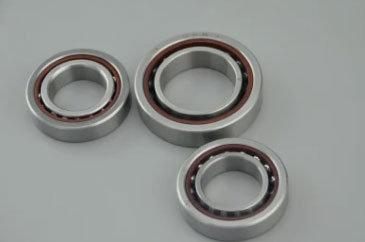Home / News / CNC Bearing Installation: Best Practices for Ensuring Optimal Performance and Reliability
CNC Bearing Installation: Best Practices for Ensuring Optimal Performance and Reliability
Introduction
CNC (Computer Numerical Control) machines play a critical role in modern manufacturing processes, providing high levels of precision, accuracy, and efficiency. Bearings are essential components in the performance and reliability of these machines, and proper installation is crucial for ensuring optimal bearing performance and extended service life. In this article, we will discuss best practices for CNC bearing installation, including preparation, mounting methods, and alignment techniques.

Preparation for CNC Bearing Installation
Before starting the installation process, it is essential to prepare the components and the working environment to ensure a successful installation:
Cleanliness: Ensure that the working environment, tools, and components are clean and free from contaminants. Use lint-free cloths and clean gloves to handle the components.
Inspection: Examine the bearings, shafts, and housings for any signs of damage, wear, or contamination. Replace any damaged components.
Lubrication: Pre-lubricate the bearings with the appropriate lubricant, following the manufacturer's guidelines.
Tools: Use specialized bearing installation tools, such as bearing heaters, induction heaters, and mounting kits, to ensure a safe and efficient installation process.
CNC Bearing Mounting Methods
There are several methods for mounting bearings in CNC machines, depending on the type of bearing, shaft, and housing:
Cold mounting: In this method, the bearing is mounted onto the shaft or into the housing at room temperature. For interference fits, the shaft or housing can be cooled to facilitate the mounting process. Cold mounting is suitable for small to medium-sized bearings and requires the use of specialized tools, such as bearing mounting kits and press plates.
Hot mounting: This method involves heating the bearing before installation, causing it to expand and allowing for easier mounting onto the shaft or into the housing. Hot mounting is suitable for larger bearings and requires specialized heating equipment, such as induction heaters or oil baths. It is essential to follow the manufacturer's guidelines to prevent overheating and damage to the bearing.
Hydraulic mounting: Hydraulic mounting uses a hydraulic nut or pressure oil method to apply force to the bearing, facilitating installation onto the shaft or into the housing. This method is suitable for large bearings and requires specialized hydraulic tools.
CNC Bearing Alignment Techniques
Proper alignment of bearings in CNC machines is crucial for ensuring optimal performance, reducing vibration, and preventing premature failure:
Shaft alignment: Use specialized alignment tools, such as dial indicators or laser alignment systems, to ensure that the shaft is aligned accurately with the housing, minimizing axial and radial misalignment.
Radial internal clearance adjustment: For bearings with an adjustable radial internal clearance, such as tapered roller bearings or angular contact ball bearings, follow the manufacturer's guidelines for adjusting the clearance to ensure optimal bearing performance.
Preloading: In some CNC applications, preloading the bearings can increase their rigidity and load capacity, improving machining accuracy and stability. However, excessive preload can lead to increased friction, wear, and heat generation, potentially reducing bearing life.
Conclusion
Proper CNC bearing installation is essential for ensuring optimal performance and reliability in CNC machines. By following best practices for preparation, mounting methods, and alignment techniques, manufacturers can ensure that their CNC machines are equipped with correctly installed bearings, resulting in improved machine performance, reduced maintenance costs, and enhanced product quality. Investing time and effort in proper bearing installation is a critical step in optimizing the performance and longevity of CNC machines in advanced manufacturing processes.
- Previous: CNC Bearing Materials: A Comprehensive Guide to Material Selection for Enhanced Performance and Reli
- Next: Understanding CNC Bearing Clearance: Its Importance and Impact on Machine Performance and Reliabilit













